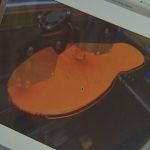 As impressive as GPS and other radio signal-based positioning technologies are, they pretty much all crap out once the device-to-be-localised is inside. This is just a fundamental property of radio waves—put something solid enough, such as most building materials, in front of them and they will attenuate.
As impressive as GPS and other radio signal-based positioning technologies are, they pretty much all crap out once the device-to-be-localised is inside. This is just a fundamental property of radio waves—put something solid enough, such as most building materials, in front of them and they will attenuate.
In other words, the photons of the radio wave will crash into the atoms making up the intervening material and they will be deflected or absorbed. Depending the nature of the wave and the material, some particles will make it, but given a typical building construction, it probably won’t be enough for an intact or at least useful signal to reach your phone from Earth’s orbit, at least for fine-grain positioning purposes.
For the various industries interested in your precise whereabouts at any given time, this is a problem. It’s also a problem for the blind and visually-impaired who stand to benefit greatly from functional, scalable, and affordable indoor positioning systems.
Computer scientists from the Scalable Software Systems Laboratory at the University of Florida led by S3Lab director Xiaolin Li have a new solution to the problem, which they describe in a paper published in IEEE Transactions on Mobile Computing. Their system, dubbed Guoguo, takes a relatively unusual approach (though not unheard of) to the problem by using acoustic signals. High-band acoustic beacons are combined with real-time smart-phone processing to yield “centimeter-level localization accuracy in several typical indoor environments,” according to the IEEE paper.

Image: Li et al
“The technology that enables centimeter or decimeter level location accuracy and integrates with context-aware mobile services has the potential to revolutionize users’ mobile experiences,” the paper notes. “One example is using smartphone for indoor step-by-step navigation for the Blind and visually impaired. However, none of existing smartphone-based solutions could achieve desired performance at low cost and low complexity with high scalability to multi-users.”
Sound in the general sense is already in some positioning systems (or ranging systems) but usually in ultrasonic or ultra-wideband forms, which, as noted by Li and his group, require additional hardware. The ideal would be a system that can use out-of-the-box smart-phone technology, e.g. a basic microphone.
“However, the limited bandwidth of a microphone, strong attenuation of aerial acoustic signals, as well as various interferences in the audible band, poses significant challenges in using acoustic signals for indoor localization,” the paper explains. “Although using acoustic signal to perform ranging-based localization suffers from various issues, such as short operation distance, low update rate, and sound pollution, the potential of centimeter-level localization accuracy motivates us to design better solutions to overcome its drawbacks.”
Guoguo works thanks to a combination of clever algorithm design and dense “anchor” networks based on cheap, very small devices. The software/app is able to execute as a background process on the phone with relatively low power requirements. Its task is accomplished advanced signal processing techniques to extract informational bits from inaudible acoustic beacons, with at least three beacons being required in earshot at any given time for localization to be successful.
The beacons, meanwhile, are based on custom hardware around the same size as a quarter and costing less than $10 per unit. The entire specification isn’t spelled out in the paper, but it looks to be pretty standard stuff. Which makes sense because the beacon’s main task is simply to take acoustic ranging measurements of a nearby smart-phone and then encode that data into another acoustic signal, which is sent back to the phone. The device then does the math.
As per usual in a technical paper pushing a new technology, the altruistic uses get a spotlight, but fear not, Silicon Valley: Acoustic localization has all sorts of commercial potential. “For normal retail stores, several hundred dollars investment on indoor infrastructure to enable indoor ‘smart’ shopping, could attract more consumers to enjoy the mobile services, and in turn boost their business,” Li and co. note.
Finally, in IRL experiments, the system worked as advertised. “Experimental results demonstrated that the achieved average localization accuracy is about 6 to 15 cm in typical indoor environments,” the paper concludes. “Guoguo represents a leap progress in smartphone-based indoor localization, opening enormous new opportunities for indoor location-based services, positioning and navigation systems, and other commercial, educational, or entertainment applications.”










